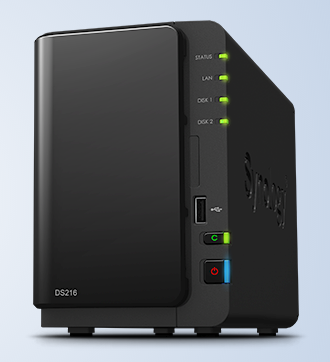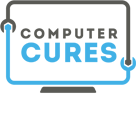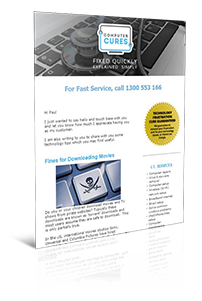Home / Handy Tips /
 Sooner or later your computer’s hard drive will breakdown – there’s nothing you can do about it. Predicting when isn’t possible, so to avoid losing your important documents, photos, and movies you’ll need to come up with a feasible backup strategy, because when the hard drive breaks, even computer repairs won’t be able to help much.
Sooner or later your computer’s hard drive will breakdown – there’s nothing you can do about it. Predicting when isn’t possible, so to avoid losing your important documents, photos, and movies you’ll need to come up with a feasible backup strategy, because when the hard drive breaks, even computer repairs won’t be able to help much.
I had a client who hadn’t been backing up regularly, and the day he decided to backup 20 years of family photos to an external hard drive, his computer died and the photos were gone. Luckily I knew of a specialist recovery company who were able to retrieve the files, but it cost him $800 and became a very expensive and stressful lesson in how not to back up your important files.
In this post we’re going to talk you through the top three forms of file backup systems I recommend for protecting your valuable documents and media files at home or in your small business as part of your regular computer maintenance.
1. External Hard Drives
External hard drives are the most popular method of backup for home users. They’re relatively cheap, readily available, and simple to use. Pair an external hard drive with automatic backup software, and your files will be saved, secure, and ready to transfer to a new computer. Plus, with the new USB 3.0, the first backup shouldn’t take more than a few hours.
 Like each of the backup methods we’re going to talk about, external hard drives do have their limitations. Firstly, external hard drives are not immune to breakages. If you need to transfer files between machines on a regular basis, general wear-and-tear and physical movement of the drive could damage it. Secondly, you must remember to plug the hard drive in. Some people forget to do this for months, leaving a ton of files unsecured.
Like each of the backup methods we’re going to talk about, external hard drives do have their limitations. Firstly, external hard drives are not immune to breakages. If you need to transfer files between machines on a regular basis, general wear-and-tear and physical movement of the drive could damage it. Secondly, you must remember to plug the hard drive in. Some people forget to do this for months, leaving a ton of files unsecured.
To summarise, here are the pros and cons of the external hard drive:
Pros:
- Inexpensive
- Simple to use
- Portable
Cons:
- Susceptible to breaking
- Limited capacity
- Must manually plug in
If you think an external hard drive is right for you, check out the Elements Portable Hard Drive.
2. Cloud Storage
Cloud storage refers to uploading files to a secure off-site server on the internet, where they can be accessed anywhere in the world with login details. This means that even if your home or office is completely destroyed, you can still recover your files. Cloud storage is taken care of by professionals, who consistently ensure your data is secure. In other words, if you opt for cloud storage, it’s very, very, very unlikely you will lose your important files. One of the key benefits of cloud backup is it gives you the ability to share some of your folders or files with other people.
 There are downsides, though. The first back up can take days, and will eat into your monthly broadband allowance. Future backups are much quicker as only new or edited files are uploaded. Although most providers offer a certain amount of storage for free, it will probably not be enough over time as you accumulate more and more data, so you will be charged for extra storage. It is not expensive, but a cost to bear in mind.
There are downsides, though. The first back up can take days, and will eat into your monthly broadband allowance. Future backups are much quicker as only new or edited files are uploaded. Although most providers offer a certain amount of storage for free, it will probably not be enough over time as you accumulate more and more data, so you will be charged for extra storage. It is not expensive, but a cost to bear in mind.
To summarise, here are the pros and cons of cloud storage:
Pros:
- Very secure
- Data is accessible wherever there’s internet connectivity
- Files and folders can be selectively shared
Cons:
- Subscription fee
- Slow process initially
If you think cloud storage is right for you, check out CrashPlan and Dropbox. If you find that you have issues connecting to the internet, our technicians can also help you with your wifi setup.
3. Network-Attached Storage (NAS)
A NAS system lies somewhere between an external hard drive and cloud storage. It’s essentially a single unit that connects to your home or office network via your modem that allows you to access all your data from any device (computer, smart phone, tablet, smart TV etc.) within range of your router. In some cases, your files are made available online, allowing you to open, edit and save files from anywhere in the world.
 Everyone connected to your home and office network can access files saved to the NAS (don’t worry though – settings allow you to restrict files from certain members of your network), and you can schedule your NAS to automatically backup new or changed files. Lastly, many NAS units have two or more hard drives, with room for more. You can set some to back up the same files on two hard drives, so your data is doubly secure.
Everyone connected to your home and office network can access files saved to the NAS (don’t worry though – settings allow you to restrict files from certain members of your network), and you can schedule your NAS to automatically backup new or changed files. Lastly, many NAS units have two or more hard drives, with room for more. You can set some to back up the same files on two hard drives, so your data is doubly secure.
These features do come at a price, and the flexibility of this backup strategy can be daunting to the less experienced.
If you want to know more about NAS, this video explains it in detail.
To summarise, here are the pros and cons of NAS:
Pros:
- Can be accessed from multiple computers
- Large capacity
- Automatic backups
Cons:
- Expensive
- Can be a little technical to use
If you think NAS is right for you, check out Synology.
Is One Backup System Enough?
Unfortunately not.
I strongly recommend having two backup systems in place, particularly for really important files.
Need Help?
Executing an effective backup strategy can be technical. If you’re looking to backup your files but don’t feel confident setting it up yourself, don’t hesitate to get in contact. Give us a call on 1300 553 166 or fill out the form on this page to schedule an appointment and get it sorted.








Leave A Comment